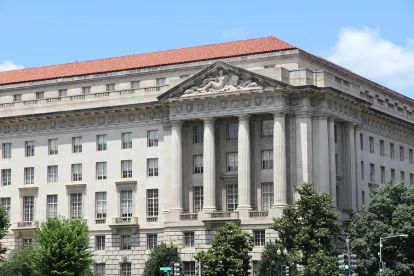Several Clean Air Act rules and policies were adopted by the U.S. Environmental Protection Agency (“EPA”) during the Trump Administration that directly affect operations with air permits. Some of these regulatory changes were accomplished by issuing guidance memos while others by made by conducting rulemakings that only recently have been completed and may be more vulnerable to being reversed.
Regulatory changes made via guidance memos are particularly vulnerable to revision because guidance documents might not be considered final agency action, which makes them tougher to challenge in court and more easily changed. Also, states can enact more stringent rules in their Clean Air Act State Implementation Plans (“SIPs”) (that EPA can also approve and enforce) that go beyond federal requirements.
In addition, when a presidential transition occurs, even recently adopted rules can be vacated by an incoming Congress using its Congressional Review Act (“CRA”) authority. The CRA allows Congress to pass, on simple majority votes of each house, joint resolutions that vacate regulations published within the past 60 legislative days. Thus, depending on which party gains majority control of the Senate through the upcoming Georgia runoff elections, the CRA might come into play. During the first year of the Trump Administration, when Republicans controlled both houses of Congress, the CRA was used to roll back Obama-era regulatory actions.
In addition to possibly rescinding, revising, or replacing the Trump-era rules, the Biden Administration may have to deal with a large volume of litigation over the Trump-era rules. As a result, we might see the Biden Administration declining to defend challenges to the prior rules, seeking to stay litigation while rescission or replacement rules are developed, or selectively defending portions of the rules.
Therefore, in the next several months, as business and operational plans are being made, companies should carefully consider how changes in Clean Air Act rules and policies might apply to their planned activities and objectives. Here are just a few samples of changes that were implemented that permittees should consider tracking.
EPA’s “New Source Review Preconstruction Permitting Requirements: Enforceability and Use of Actual-to-Projected-Actual Applicability Test in Determining Major Modification Applicability.” On Dec. 7, 2017, EPA issued an NSR guidance memorandum on how to project future air emissions after an existing facility is modified. Interpreting a 2002 rule, EPA said that, so long as a company complies with the procedural requirements used to forecast projected emissions, the EPA would not second-guess the permittee’s emission projections. If a company mistakenly projects an insignificant increase, EPA said it would not pursue enforcement unless the post-project actual emissions indicate a significant net increase did occur.
EPA’s “Project Emissions Accounting Under the New Source Review Preconstruction Permitting Program.” Traditionally, in NSR applicability reviews, only project increases were considered in “Step 1” of the review used to determine if significant emission increases were expected to occur as a result of the project. Only after that Step 1 would other decreases and increases be considered. This memo stated that emissions decreases as well as increases can be considered in Step 1 and that decreases in Step 1 need not be creditable or enforceable. This approach allows for some projects to “net-out” of NSR at Step 1 and never reach Step 2. Environmental groups challenged the memo as final agency action, but the case was stayed because EPA began a rulemaking to codify the memo’s approach. On Nov. 24, 2020, EPA published a final rule, at 85 Fed. Reg. 74890, that incorporates this approach, which may also be challenged in court.
EPA’s “Reclassification of Major Sources as Area Sources Under Section 112 of the Clean Air Act.” Changes in EPA’s so-called “Once in, Always in” policy were made, first by memo and then in a final rule issued on Nov. 19, 2020. This rule reverses prior agency policy that once sources were deemed to be subject to MACT standards, they remained subject to them even when they no longer exceeded the HAP program’s major source emission thresholds. This final rule might trigger requests for reconsideration, might be challenged in court, and might be vulnerable to CRA review in the next Congress. In addition, depending on each state’s rules, this interpretation might not be observed in a particular state.
In 2018, EPA also issued a final interpretive rule, “Prevention of Significant Deterioration (PSD) and Nonattainment New Source Review (NNSR): Aggregation; Reconsideration,” that addressed aggregation of projects to determine if they are part of one modification at the facility for purposes of NSR permitting. EPA concluded that the timing of the projects is not the only factor in determining whether projects should be aggregated and established a rebuttable presumption that projects more than three years apart should not be aggregated. There is some debate on how binding an interpretive rule is on the agency that issues it, and states with SIPs may have latitude to interpret their own programs. Therefore, companies must continue to look carefully at which modification projects must be aggregated for purposes of NSR review.
Some other policy changes or reinterpretations that the EPA made during the last four years by issuing guidance memos include: EPA’s Dec. 2, 2019, “Revised Policy on Exclusions from ‘Ambient Air’” which revises the Agency’s 1980 policy on the exclusion of certain areas from the scope of “ambient air” under the Clean Air Act and EPA’s regulations; EPA’s April 30, 2018, letter to Pennsylvania’s Department of Environmental Protection and its Oct. 16, 2018, letter to the Wisconsin Department of Environmental Management re: the interpretation of “common control” for purposes of determining whether two or more entities at a single location constitute a single source making for air permitting decisions; and EPA’s Nov. 26, 2019, guidance document, “Interpreting ‘Adjacent’ for New Source Review and Title V Source Determinations in All Industries Other Than Oil and Gas.”




 />i
/>i

